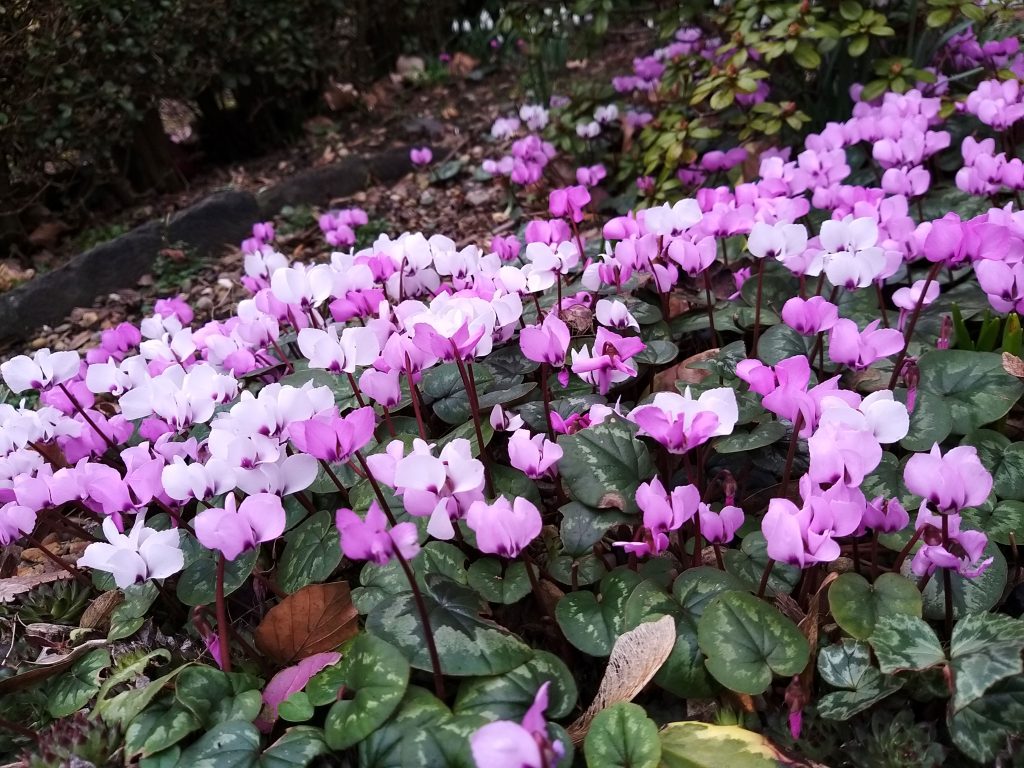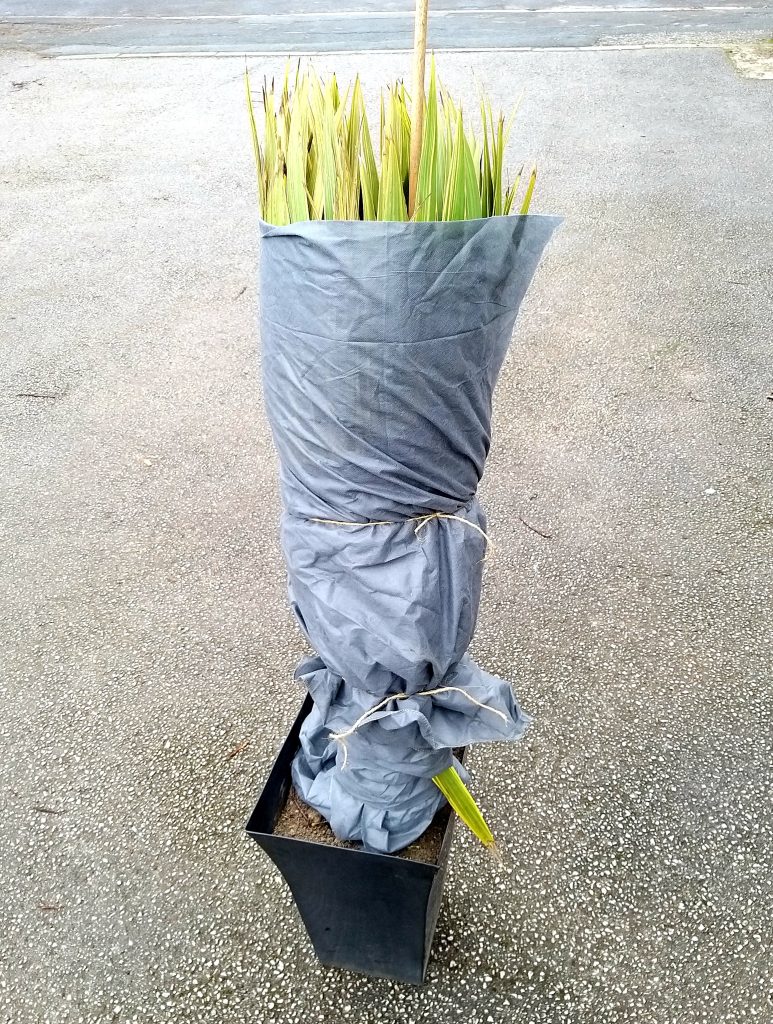‘The March wind roars
Like a lion in the sky,
And makes us shiver
As he passes by. When winds are soft,
And the days are warm and clear,
Just like a gentle lamb,
Then spring is here.’
– Author unknown
By Gordon the Gardener
I have to smile at the old words of wisdom written in poetry above, when I see the news headlines of today, with fashionable slogans like ‘Snow bomb’, Arctic plunge and the favourite ‘Return of the Beast from the East.’
As gardeners have always known there is no beast. Rather more correctly, there is an old saying: ‘When the wind is in the east, ‘tis good for neither man nor beast.’ It’s just an east wind.
The east wind can come at any time of the year although, fortunately, they are not common. But when they do arrive the gardener must be prepared.
Tender shrubs such as Hebe, Yuka and Cordyline palms that are popular these days are susceptible to the east wind. I wrap them in a wind resistant material. This keeps off the worst of winter’s chill.
Insert a cane beside the plant to add stability, and then hold the leaves of the plant so not to crush or damage. Then wrap the material around to get coverage, and then the gently tie round to hold in place.
Cyclamen are offered in the autumn as ‘Outdoor Hardy Cyclamen’ but these are essentially cool greenhouse plants which can’t withstand temperatures the like we’ve seen this winter of -7C.
But there are Cyclamen that will stand low temperatures and even flower through the snow. I am talking about Cyclamen Coum. These tough little fellows can be bought from nurseries right now in pots.
The corms can be planted 10 inch (254 mm) apart in good ground, incorporating some well-rotted manure. They spread quickly – some say by mice – so for a good crop get your mice working!

The wise gardener always keeps a weather eye open for frost. If skies are clear and bright and the sun has got his hat on in March then there could be a frost especially if there is an east or north wind. However, if the wind comes from a southerly direction, then rest easy.
This has been an unusual winter in that light levels have been generally low. Plants need warmth and water to grow, but light is the most important factor. However, being part of the natural world, they generally win out in the long run.
As the greatest gardener of our times, Geoffrey Smith, said: “A plant’s memory is far stronger than ours.”
There has been much airtime and newsprint taken up over the shortage of vegetables. I know panic creates much of it, but there is no need for it if planning is in place.
Tomatoes have disappeared from supermarket shelves but there is a great choice for growers. A standard variety I like is Alicante, as it produces an early crop with a sweet taste. Another is Gardener’s Delight.
If you want an easy one which needs no training, then go for one of the bush varieties Cherry Falls. I grew some last year, one plant each in a large 5-litre pot. I grew just four plants and had enough fruit to supply the neighbours as well.
But if we get summer temperatures of last year (I recorded 40C) they could easily be grown outdoors.
Tomatoes, sweet peppers, lettuces, salads, leeks, onions and cauliflowers can be sown now in the greenhouse. I use John Innes seed compost for this task. Seeds can be sown and placed in a propagator or on a heat mat with a bottom heat of around 18C (65F). Or they can be germinated on the kitchen windowsill.
The seed can be given a covering of milky white polythene (I use cut up pedal bin liner bags) this keeps the atmosphere inside turgid. But shake excess water off the polythene every day to prevent damping off.

When the seedlings have germinated and grown their first true leaves, they can be transplanted into cells or seed boxes 3in (76 mm) apart using John Innis potting compost rather than a multi-purpose, so you can be sure of its contents. There is a lot of dodgy multi-purpose on the rampage at the moment – some contain bits of wood.
St Patrick’s Day – March 17 – is traditionally the day to plant potatoes. Plant potatoes of first and second earlies 12cm (5in) deep and 30cm (1ft) apart and 2ft in between the rows.
Main crop potatoes can be planted in April, 12cm (5in) deep and 38cm (15in) between the tubers, in rows of 75cm (30in) apart.
If you have no garden, potatoes and many other vegetables can be grown in containers. Place 14cm (6in) of a multi-purpose compost in the bottom of the container. 100g (3oz) of potato fertiliser can be mixed with this.
Then place three seed potatoes spaced out on top of the compost. Then cover with another 14cm (6in) of compost on top. Three more seed potatoes can be placed on top again, and topped up with more compost and another 100g (3oz) of fertiliser mixed in. Fill to the top of the pot. A popular variety Charlotte has a lovely taste and is good for growing in containers or the ground.
READ MORE: Catch up on Gordon’s monthly blogs HERE
Seeds that I sowed in February are now ready to move on. And, all being well, when we get to the third week in March, potting and pricking out can be done with confidence. Cuttings can be taken of Fuchsias, Pelargoniums, Coleus and many others from the third week.
There is still time to plant trees and shrubs. Roses, too, which I’ve noticed are making a welcome comeback. When buying roses choose ones that have at least two strong stems around the thickness of your little finger.
Pruning can also be done in March, removing and stems that are weak and thin. Try and keep the middle of the bush open when pruning, which allows air and light in.
Oh, and remember. Get them mice working!


















